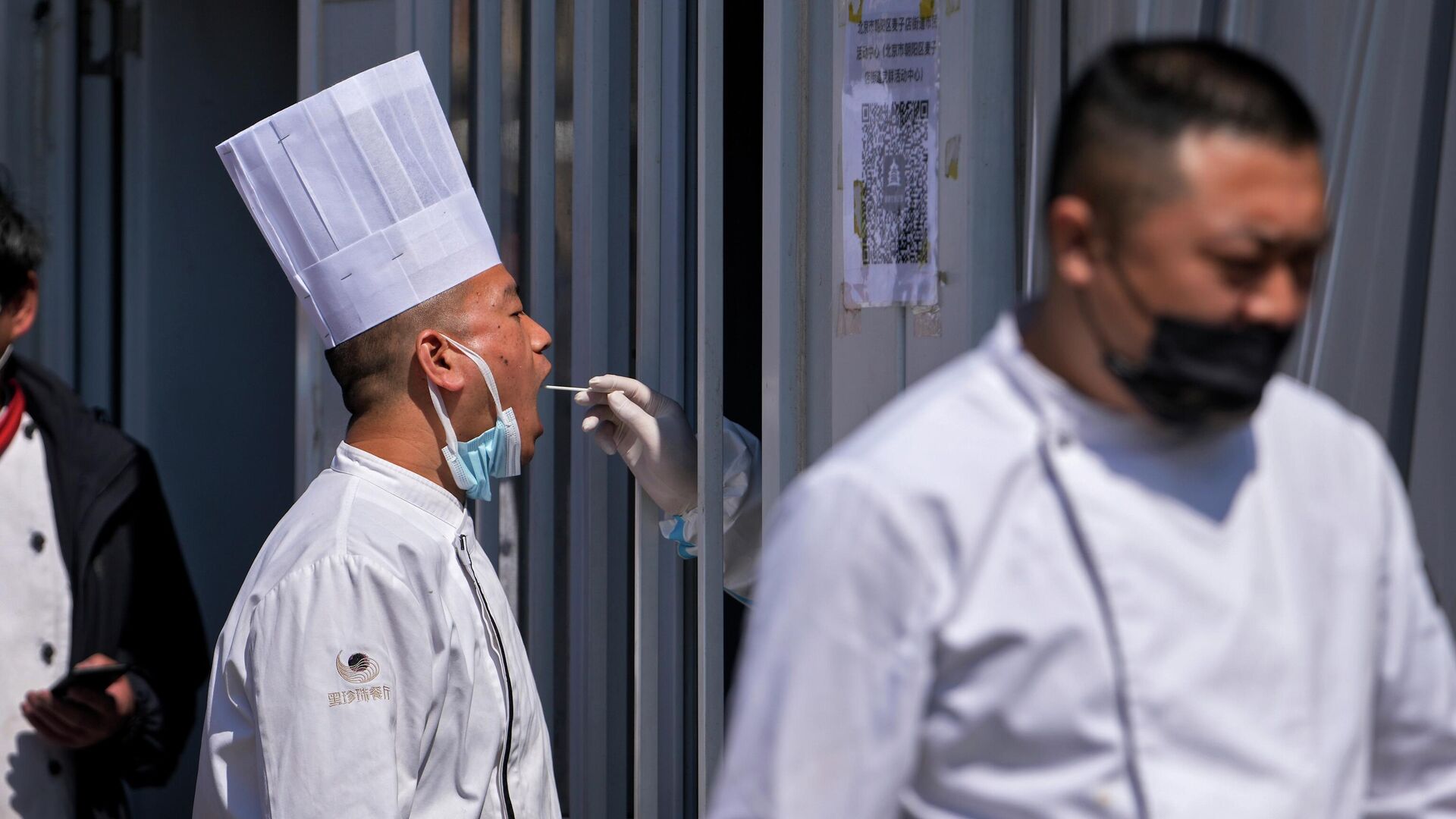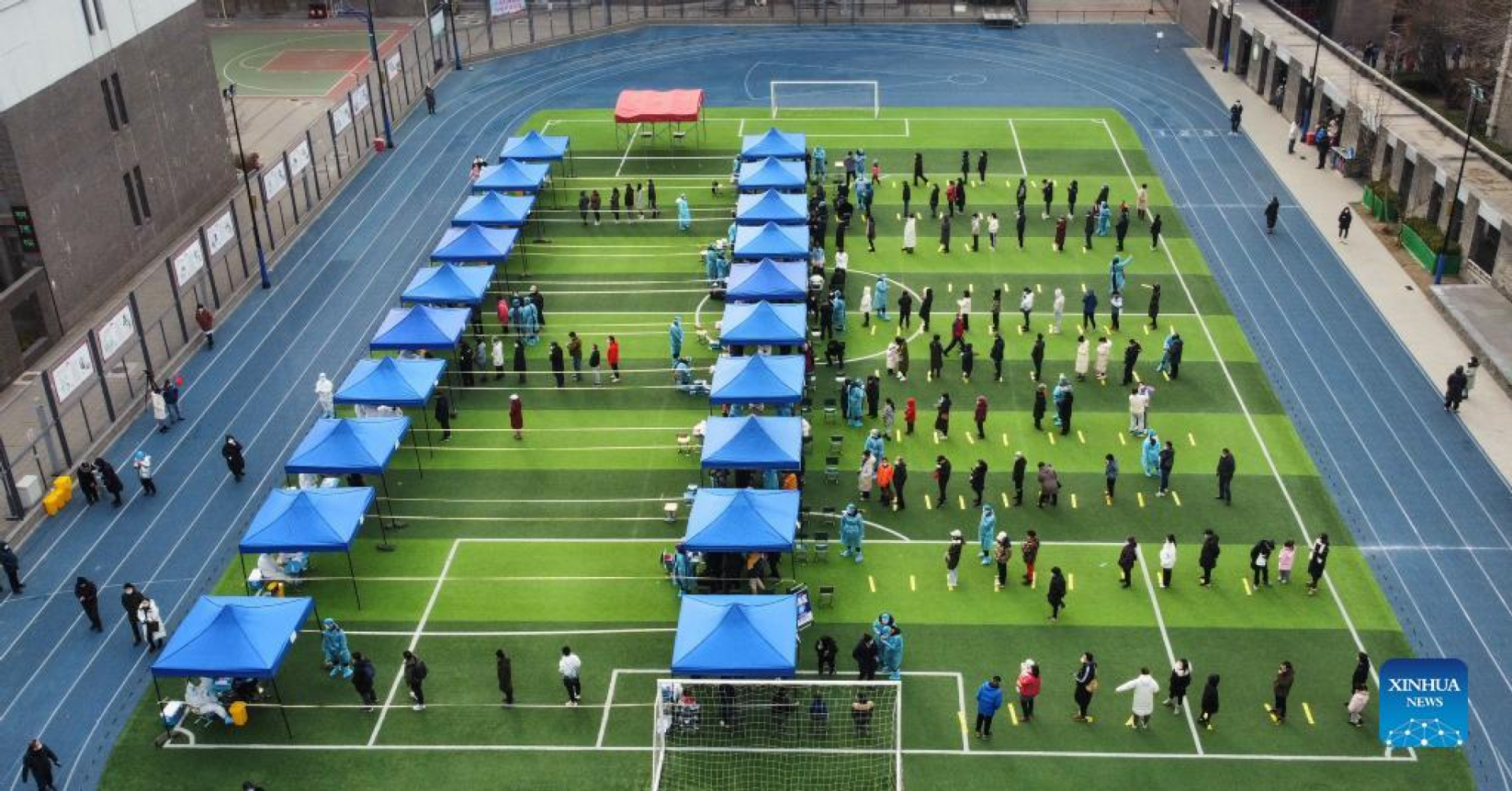China’s Economy Got $26 Billion Boost From Gov Buying 11 Billion Covid-19 Tests - Report

© AP Photo / Andy Wong
Subscribe
In contrast to Western governments’ health policies, China has adopted a “dynamic Zero Covid” policy intended to keep the infectious respiratory virus from spreading unimpeded through the Chinese population, which experts say would kill millions.
Amid China’s rigorous effort to identify, isolate and treat all COVID-19 cases in the country, the Chinese government has spent $26 billion on testing materials in just the last three months, according to a Sunday report by researchers with Soochow Securities, a Suzhou-based investment firm.
The report, viewed by the South China Morning Post (SCMP), said that in April, May and June, China bought 10.8 billion COVID-19 tests at a cost of 174.6 billion yuan ($26 billion). That cash injection will likely boost the Chinese economy modestly in the second quarter, by about 0.62%, helping to offset the damage done by the lockdowns that accompanied mass-testing, which often enveloped cities of tens of millions of people for weeks at a time.
In late April, the Politburo of the Communist Party of China said it expected to still meet a revised economic growth target of 5.5% for 2022, after a more than 6% increase was expected in late 2021 for China’s gross domestic product for this year. That was before the Omicron variant burst onto the scene, causing the largest COVID-19 outbreak to date in the United States and pushing China’s lockdown system to the brink.

Aerial photo taken on Jan. 9, 2022 shows a testing site for nucleic acid test in Nankai District of north China's Tianjin. North China's Tianjin, a municipality that neighbors Beijing, has decided to start a citywide nucleic acid testing after 20 people tested positive for COVID-19, authorities said Sunday.
Beijing has tried other methods to buttress the economy as well, including backing off some planned tech regulations intended as part of a crackdown on corruption and monopolistic practices in the tech sector. In other instances, more drastic measures have been used, such as locking employees in at key factories in Shanghai so that production can continue without the risk of a Covid exposure causing a closure.
Since December, China has struggled through one lockdown after another, testing cities of tens of millions of people at a time. Still, even including the initial COVID-19 outbreak in late 2019 and early 2020, mainland China has only seen about 886,000 cases of the virus, nearly all of them in the last six months, and 5,226 deaths, most of which took place in early 2020. Hong Kong, however, has struggled to cope with a vast outbreak that might have infected as much as half the special autonomous region’s population, or 3.6 million people.
By comparison, in a country with one-quarter the population of China, the United States, there have been more than 85 million COVID-19 cases and more than 1 million deaths, although some indirect data from the US Centers for Disease Control and Prevention (CDC) suggests the true number of Covid cases could have been twice that. Almost immediately after COVID-19 hit the US in March 2020, the federal government began declaring it impossible to contain the virus and commentators spoke openly of the disease inevitably becoming endemic.
